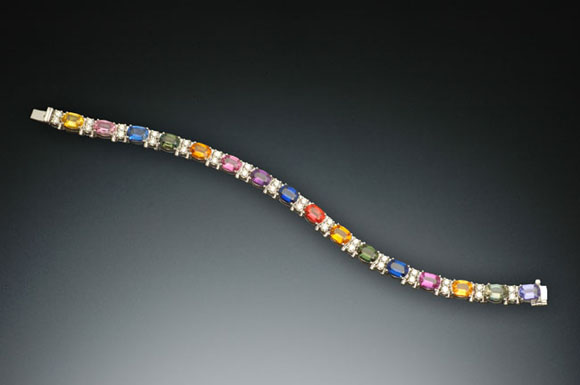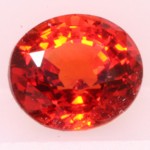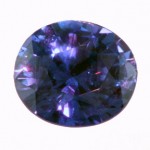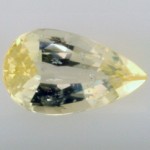Eight Tips for Buying a Fancy Sapphire
September 21st, 2012 by James L. Sweaney, CGA, FGA. GGIf you think all sapphires are blue, take another look– this gorgeous bracelet is set with in an amazing array of beautiful sapphires, from deep purple to soft green to sunset orange to bright pink to golden yellow. In the gem trade, we call these unusual colors “Fancy” sapphires. Here are some handy insider tips about buying a Fancy Sapphire.
1. Color comes first, but look for well cut bright stonea that are clear and sparkly. Gemology 101 will give you the scoop on evaluating clarity, cut, and of course color.
2. Sapphire is a dense gem, heavy for its dimensions, so set your sights on a larger stone by weight to get the look you want. A 6.5 mm round sapphire weighs about 1 1/2 carats while the same 6.5 mm round diamond weighs around 1 carat.
3. Many of the colors occur in a range of light to dark tones in intensities from pastel to vivid. For example, you can choose a pastel “baby pink” or an intense bubble gum pink. Look for the colors you really like– odds are you can find a fancy sapphire that will suit your taste and personality perfectly.
The more vivid colors are generally more expensive. If you buy a loose stone, keep in mind that the color may appear a bit darker once the stone is set.
4. The most sought after and valuable Fancy Sapphire is known as Padparadscha. The color range for “Pad” is pure orangy pink to pinkish orange– both pink and orange must be present and there should be no brown overtone. Most sapphires of the correct “Pad” color are from Sri Lanka.
Padparadscha sapphires of good size and quality are quite expensive and should have documentation from a reputable gemological laboratory that specifies that the color falls into the “Pad” color range. Our Rare Gem Specialists will make sure your “Pad” is properly certified.
Some are color changers– appearing blue in daylight, purple or violet in incandescent light–this example shows a moderate color shift.
6. Green sapphire colors are soft and muted, usually of moderate intensity. Natural green sapphires are relatively inexpensive, compared with the other colors.
7. Yellow sapphires occur naturally in pale straw yellows, like this pear shaped sapphire from Sri Lanka, that can that can be enhanced by heat to more intense golden yellows.
8. Most natural sapphires are enhanced for color and/or clarity. This is a good thing because it means more of these beautiful natural gemstones are available to the consumer at affordable prices.
The most common and widely accepted enhancement is heat treatment, normally used on better quality raw gems to intensify and develop the color.
The important thing is that you are informed about such enhancements before you buy. Be sure your sales receipt and gem documentation specifies whether or not the stone has been enhanced and if so, by what process.
The Rare Gem Specialists at Mardon will be happy to explain the important facts about sapphire colors, gem enhancements, and to show you unique and beautiful examples of the fancy sapphire– stop by the shop or give us a call.
Tags: AGTA, color change sapphire, fancy sapphire, Gemology 101, green sapphire, heat treatment, orange sapphire, Padparadscha, purple sapphire, yellow sapphire

















